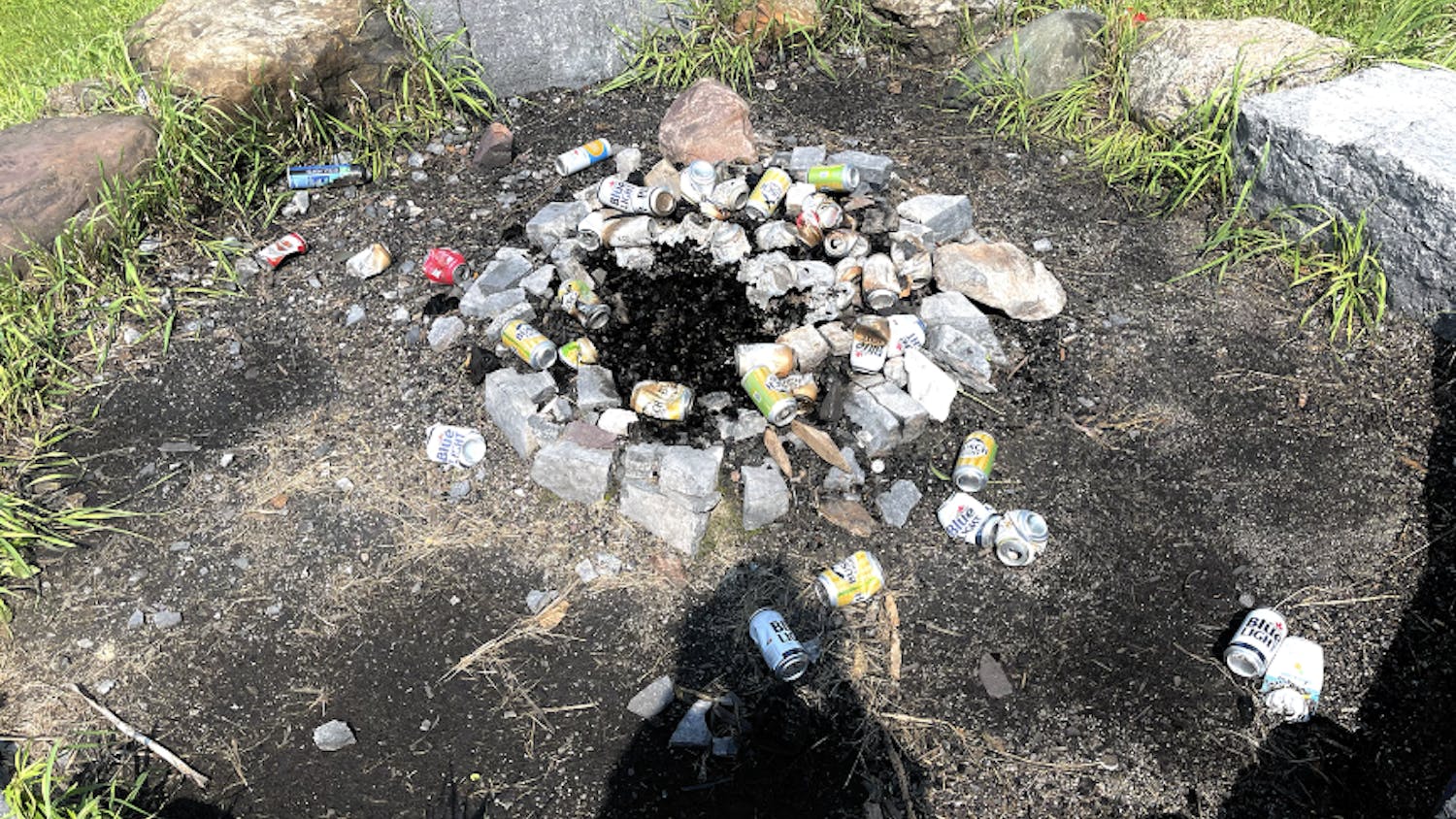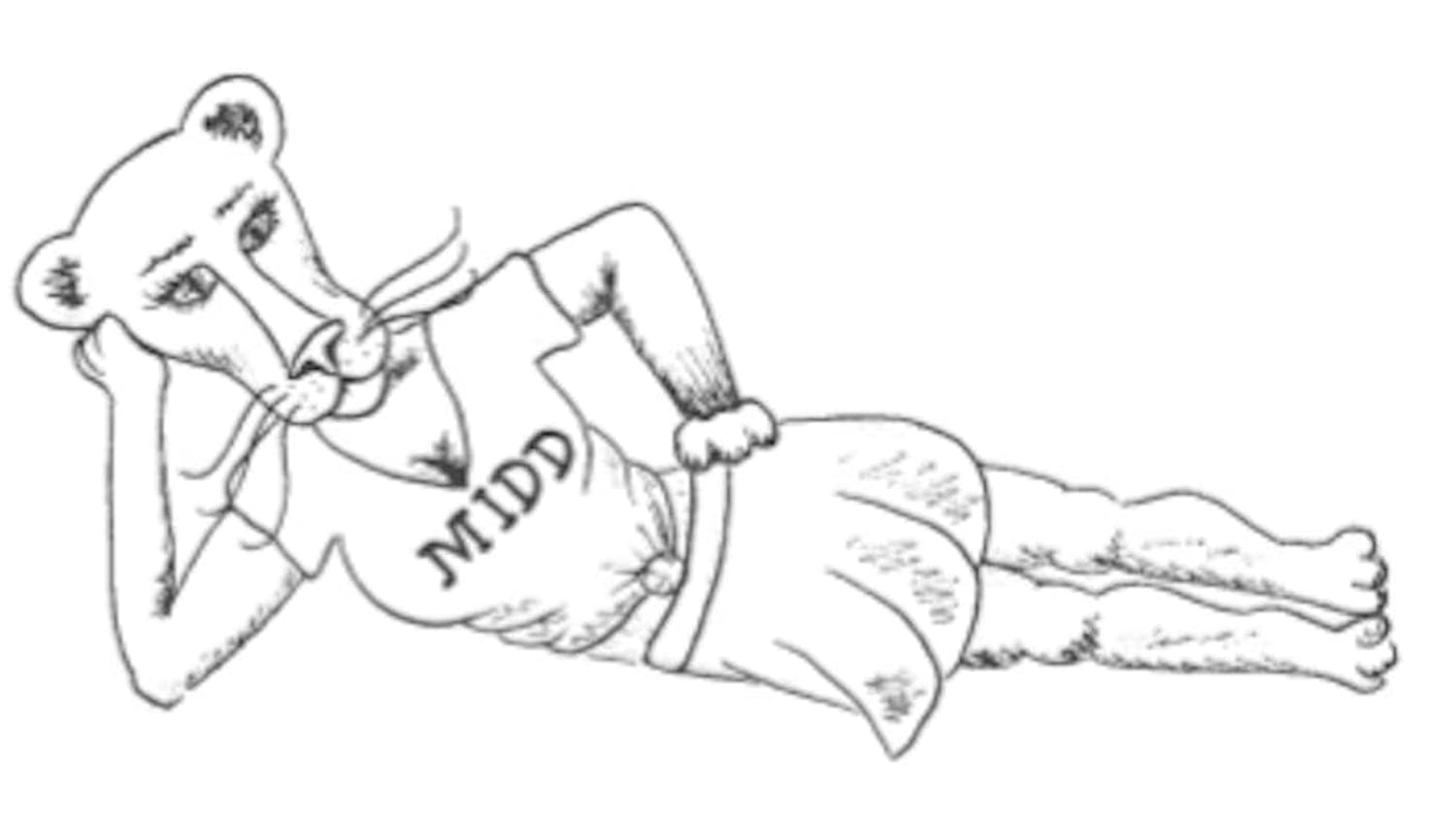Author: Andrea M. LaRocca
With the new yet bittersweet slogan of The Times-Picayune, "We publish come hell and high water," projected behind him, Editor-in-Chief Jim Amoss explained to a Middlebury audience last Thursday exactly how his newspaper survived the odds and the elements, publishing all the while during Hurricane Katrina's onslaught. Amoss, the uncle of Matt Amoss '07.5, lectured at Middlebury on Oct. 27 at his nephew's request.
The Times-Picayune, which is the largest local paper to serve the New Orleans area, recently gained fame under Amoss' leadership when the newspaper did not miss a day of publication during Hurricane Katrina. The newspaper was also one of, if not the first, to make known the depth and extent of the devastation in New Orleans.
Using his staff's photographs to illustrate his story, Amoss told the Middlebury audience that he arrived at the Times-Picayune office on Aug. 26 ready for more of the usual hurricane season coverage. That fateful afternoon before landfall, he joked to his colleague and Times-Picayune hurricane reporter Mark Schleifstein that it would be "another uneventful weekend." But when he saw Schleifstein's expression, Amoss realized that this time, something was different.
"How pale he was made me pay attention," said Amoss. In spring 2002, Schleifstein had written a five-part series in the Times-Picayune entitled "Washing Away," which detailed how the "bowl" of New Orleans would fill up if a Category 4 hurricane or stronger hit New Orleans. When Schleifstein showed Amoss computer images of Katrina spiraling straight towards the Louisiana coastline, he knew that Schleifstein's predictions - once ignored as being alarmist - were suddenly valid.
After convincing his wife and son to evacuate to Texas, Amoss packed his sleeping bag and hunkered down in the Times-Picayune office with his colleagues to await the storm and to cover whatever it would bring.
"At about 2 a.m. on Sunday night, the wind started howling," said Amoss. "Then at about four in the morning, the power went out. By 4:30 a.m., one of the huge floor-to-ceiling windows in our newsroom was blown in its entirety all the way across the room into the opposite wall." That was how it began in the Times-Picayune office - and by morning Katrina was in full force.
Amoss described how he watched the storm peel away rooftops and tear down trees. In the morning, with rain pouring down in "opaque sheets," two reporters dared to ride their bicycles out into the city to assess the damage. Amoss said that they came back, breatheless, with the startling news that the levees had broken and the city was flooding. According to Amoss, when the bicyclists returned, the other reporters were preparing that day's front page. Amoss remembered their exact words to the newsroom about their work in progress: "'Put it away. What is going to happen is going to make the hurricane look like child's play.'"
The Times-Picayune published online that night with the headline, "Catastrophic," at a time when other national medias were still reporting that New Orleans had "dodged yet another bullet," said Amoss. With the water rising outside the newspaper office at a rate of one inch every seven minutes, though, Amoss knew that neither his city nor his newspaper had dodged anything yet, and he made the difficult decision to evacuate the building.
The journalists who ignored the first evacuation orders to stay behind and cover the disaster suddenly had to abandon their posts. The 240 people in the Times-Picayune office - including some family members of the newspaper staff - piled into 12 diesel-powered newspaper delivery trucks and plowed through the streets, which were over four feet underwater. "We left with the queasy fear that for the first time since the Civil War, we might not produce a newspaper tomorrow," said Amoss.
When the newspaper refugees reached safety on the other side of the Mississippi River, their first concern was how to publish a newspaper by morning. According to Amoss, they quickly realized that people needed to report firsthand from inside the city. An eclectic group of 12 reporters - including the editorial page editor, the art critic and the popular music critic - volunteered to return to the "hell and high water" from which they had just escaped. The rest of the Times-Picayune staff traveled on to Houma, La., where newspaper production began at the offices of sister newspaper Houma Courier.
In the worst combination of personal and journalistic stress, the Times-Picayune kept publishing. "We devised a rule early on that if you worked in the newsroom, no matter what position you had, if you had lost your house in the storm, nobody could yell at you for anything," recalled Amoss with a sad laugh.
The Times-Picayune published online again that night and the following night, but by the fourth day, it was publishing hard copy newspapers on the Houma Courier presses. These newspaper were then distributed to the overflowing New Orleans refugee shelters and to accessible people in the city.
"In the early days, if you walked down Bourbon Street with a bundle of Times-Picayunes, it was like you were bringing hot bread to the starving masses," said Amoss.
After relocating again to Louisiana State University and publishing from its journalism school offices for several weeks, the Times-Picayune returned to its New Orleans office, which miraculously did not flood, as of Oct. 10. Amoss' wife and son also returned to their home for the first time the night before Amoss' lecture.
Amoss already had a trip planned to the New England area for a conference in N.Y. and a lecture at Yale when Matt asked his uncle to include Middlebury in his trip. Last Thursday marked Amoss' first visit to the College, and he was here for a whirlwind 24 hours.
"When Jim told us the story of how they [the Times-Picayune staff] were still publishing and how they barely got out of the city, my first reaction and my dad's first reaction were the same: that someone needs to tell that story," said Matt, a New Orleans resident and driving force in the Middlebury Hurricane Coalition. Five out of the six brothers in the Amoss family call New Orleans home.
Amoss' lecture was well-received, though slightly less attended than expected. President Emeritus and Professor of History John McCardell said of Amoss' lecture, "I thought Jim's presentation was remarkable. His insights into the impact of Katrina on his home town, together with his story of how the Times-Picayune continued to cover the news and get the paper out, provided marvelous examples of tenacity, persistence, imagination and grace under pressure."
Amoss continues to spearhead the now-famous and award-winning local publication's coverage of New Orleans' recovery, but, as the newspaper's slogan suggests, he does so with an optimistic outlook, despite emotional memories of Katrina's wrath. "New Orleans will rebound and be a better city than it has been," he said. "And we'll be there for it."
Times-Picayune surviving the storm
Comments



